Search Images
Browse Content (p. 1641)
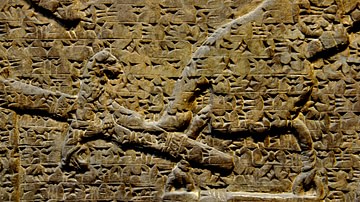
Image
Standard Inscription of King Ashurnasirpal II
A close-up of the "Standard Inscription" of the Assyrian king Ashurnasirpal II, from the North-West palace at Nimrud (ancient Kalhu; biblical Calah), northern Mesopotamia, modern-day Iraq, Neo-Assyrian Empire, 865-860 BCE. The British Museum...
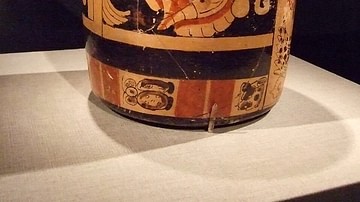
Image
Chocolate Beaker
Vase for pouring chocolate, earthenware, Belize, Late Classic Maya, Altun-Ha style. (De Young Museum of Fine Arts, San Francisco)
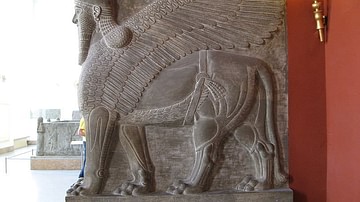
Image
Shedu-Lamassu from the Palace of Tukulti-Ninurta I
Shedu-Lamassu (meaning a male lamassu) from Tukulti-Ninurta's palace, c. 1225 BCE. Vorderasiatisches Museum (Pergamon Museum), Berlin
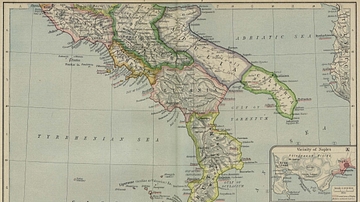
Image
Map of Ancient Italy, Southern Part
Reference Map of Ancient Italy. Southern Part
"Historical Atlas" by William R. Shepherd, New York, Henry Holt and Company, 1923
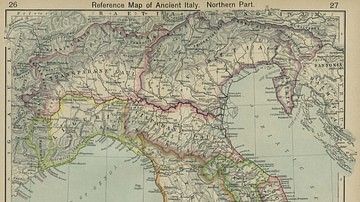
Image
Map of Ancient Italy, Northern Part
Reference Map of Ancient Italy. Northern Part.
"Historical Atlas" by William R. Shepherd, New York, Henry Holt and Company, 1923
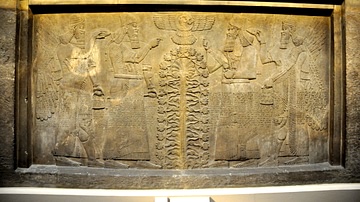
Image
Ashurnasirpal II Prays Before the Sacred Tree and the God Shamash
The Assyrian king appears to raise his right hand and point his right index finger in a gesture of worship. He holds a mace, the symbol of authority. The Sacred Tree (which is probably a palm tree) lies at the middle of the relief. The king...
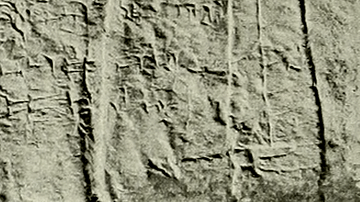
Image
Tiglath Pileser I
From a rock relief found in 1862 CE at Birleyn, also called "The Tigris Tunnel", in modern-day Turkey. Tiglath Pileser I is identified in the cuneiform inscription. British Museum, London
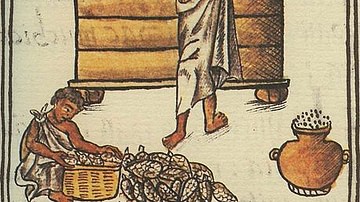
Image
Aztec Agriculture
An illustration from the Florentine Codex depicting Aztecs storing maize.
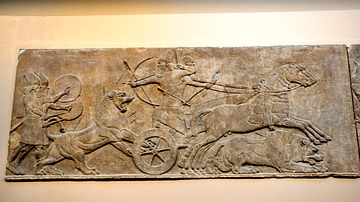
Image
Ashurnasirpal II hunts lions
In this wall relief, the Assyrian King Ashurnasirpal II stands in a royal chariot and hunts lions. Neo-Assyrian era, 865-860 BCE. From Room B (the throne room), North-West palace at Nimrud (ancient Kalhu; Biblical Calah), northern Mesopotamia...
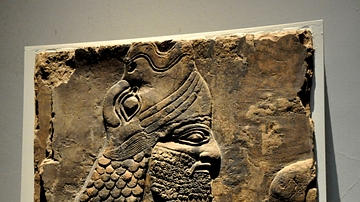
Image
Apkallu wearing a fish cloak
This protective spirit (Apkallu or Abkallu) guarded the entrance to the temple of Ninurta at Nimrud. A fish's head can be seen on Apkallu's head, and its skin hangs down over the back of Apkallu's body. Neo-Assyrian era, 865-860 BCE. From...